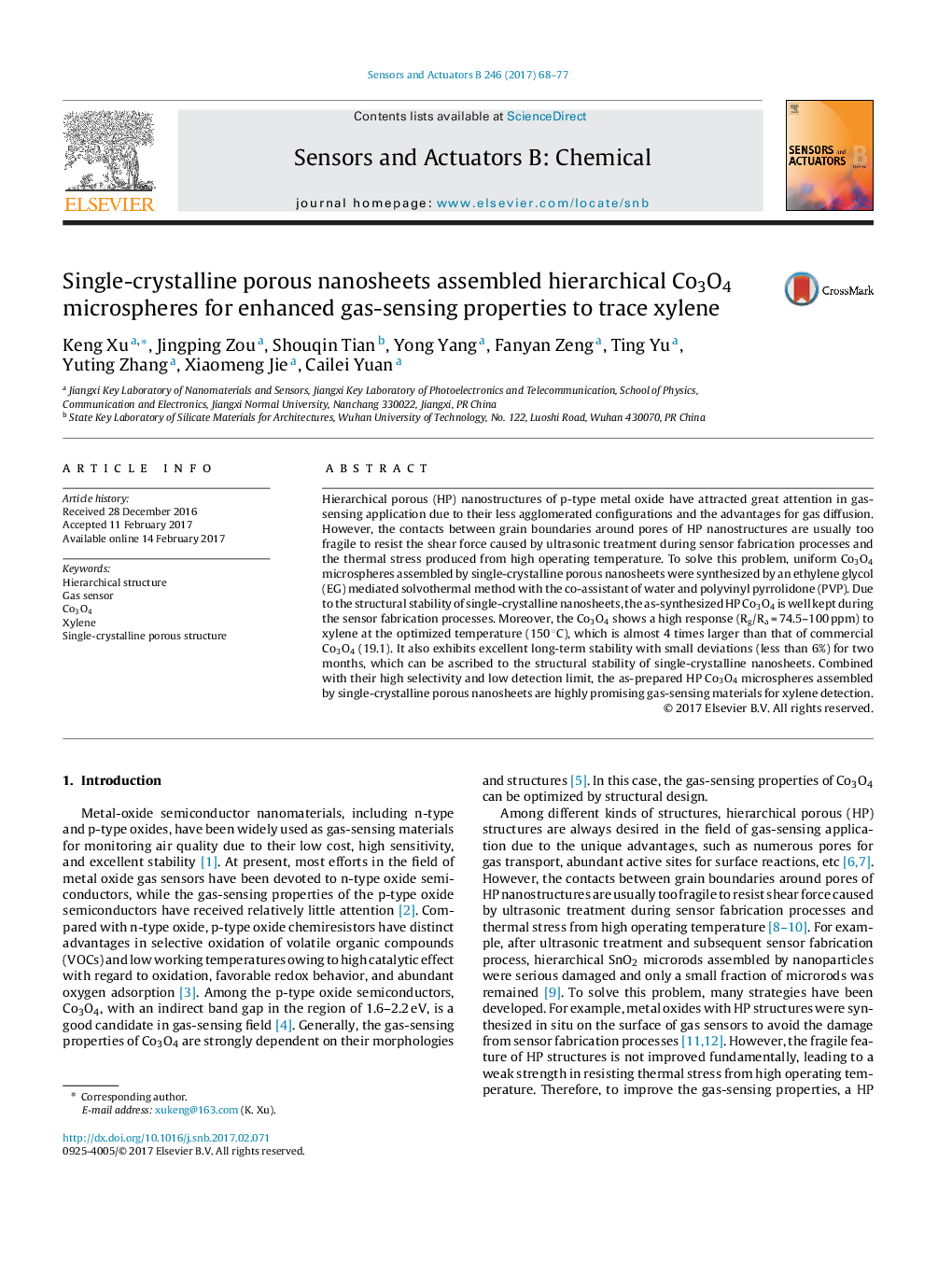| Article ID | Journal | Published Year | Pages | File Type |
|---|---|---|---|---|
| 5009760 | Sensors and Actuators B: Chemical | 2017 | 10 Pages |
â¢Novel flower-like Co3O4 structures have been fabricated by a simple EG-mediated solvothermal method with the co-assistant of water and PVP.â¢Due to the structural stability of single-crystalline nanosheets, our HP structure was well kept during the sensor fabrication processes.â¢The HP Co3O4 showed a high response to xylene at the optimized temperature, which was almost 4 times larger than that of commercial Co3O4.â¢The HP Co3O4 also exhibited excellent long-term stability, which was also attributes to the structural stability of single-crystalline nanosheets.
Hierarchical porous (HP) nanostructures of p-type metal oxide have attracted great attention in gas-sensing application due to their less agglomerated configurations and the advantages for gas diffusion. However, the contacts between grain boundaries around pores of HP nanostructures are usually too fragile to resist the shear force caused by ultrasonic treatment during sensor fabrication processes and the thermal stress produced from high operating temperature. To solve this problem, uniform Co3O4 microspheres assembled by single-crystalline porous nanosheets were synthesized by an ethylene glycol (EG) mediated solvothermal method with the co-assistant of water and polyvinyl pyrrolidone (PVP). Due to the structural stability of single-crystalline nanosheets, the as-synthesized HP Co3O4 is well kept during the sensor fabrication processes. Moreover, the Co3O4 shows a high response (Rg/Ra = 74.5-100 ppm) to xylene at the optimized temperature (150 °C), which is almost 4 times larger than that of commercial Co3O4 (19.1). It also exhibits excellent long-term stability with small deviations (less than 6%) for two months, which can be ascribed to the structural stability of single-crystalline nanosheets. Combined with their high selectivity and low detection limit, the as-prepared HP Co3O4 microspheres assembled by single-crystalline porous nanosheets are highly promising gas-sensing materials for xylene detection.
